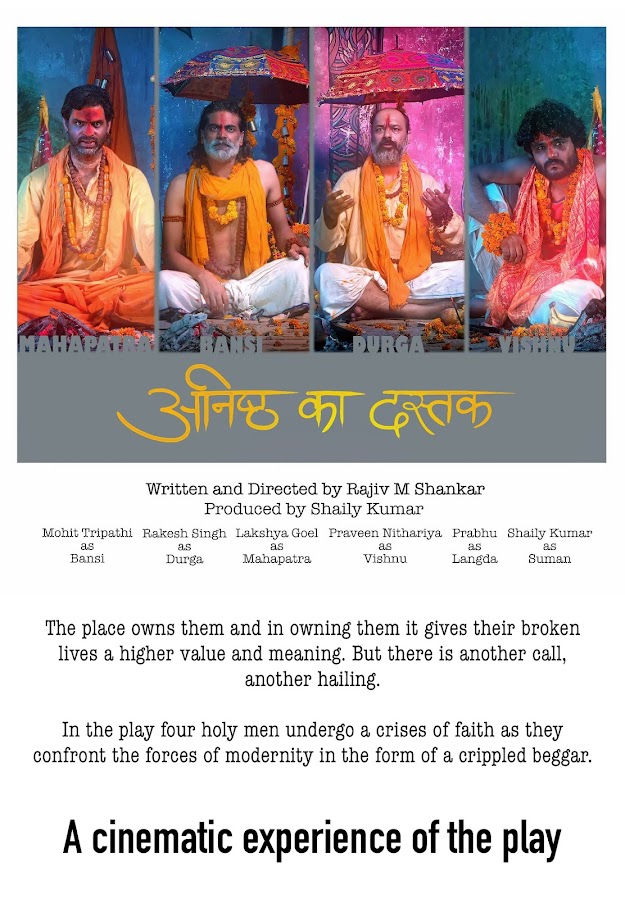Kathmandu Uprising and Gen-Z Betrayal | Excerpt From The Light of Light by Rajiv Mudgal
Digital Inferno and the Inner Light: Decoding South Asia’s Chaos
By Sujata Prakash
The streets of Kathmandu erupt under a blood-red dawn on September 8, 2025, in the hour of Blood Moon, following the eve of Id-e-Milad-un-Nabi, as tongues of flame devour the neoclassical majesty of Singha Durbar, its marble pillars crumbling like ancient prophecies foretold, consumed by a Gen Z mob—students and slum-dwellers wielding sticks and Molotovs, their chants of “We are fire!” rising like a banshee wail from a fractured earth.
The air chokes with swirling smoke and the bitter reek of petrol, a stark shroud over the nearby Pashupatinath Temple, where hours later, families cradle the charred husks of their sons—protesters felled by security’s bullets—laying them on pyres whose flames leap like anguished spirits against a sky bruised with ash. The Supreme Court, that hallowed citadel of democracy, shatters under a hail of stones and shattering glass, its corridors reduced to a graveyard of rubble as youths storm in, their rage a living tempest born from a government’s reckless ban on Instagram, YouTube, and TikTok—a digital guillotine that silenced their cries and starved their souls.
Eyewitnesses from The Kathmandu Post murmur of a city unmoored, a chaos not sown by foreign hands but birthed from decades of betrayal, as PM Khadga Prasad Oli flees by helicopter, his resignation a hollow whisper amid 74 dead and 2,000 wounded, the bans lifted too late to quell the inferno that now scars the land.
In the shadow of this apocalyptic blaze, a viral shadow twists the tale—a grainy video of crowds near Pashupatinath, Shiva’s sacred abode, sends a shiver of dread, hinting at desecration, yet the truth burns with a fiercer light: no assault, but a mourning rite, pyres for the fallen mistaken for sacrilege as stones rain on police barricades and anti-Hindu slurs slice the air like cursed blades, a raw vengeance against Brahmin elites fueling the fray. Priests lock the temple gates, their ancient chants drowned by the cacophony, as the sacred and profane entwine in a danse macabre of grief and rebellion, the air thick with the scent of sandalwood and blood.
This is no measured uprising of social media metrics or Discord raids—it’s a visceral cataclysm, a hydra of hurt forged from 20.8% youth unemployment and nepotism that crowned ministers’ kin while the young withered, its tendrils stretching across South Asia: Sri Lanka’s 2022 Aragalaya echoes, Bangladesh’s July 2024 revolution that toppled Sheikh Hasina with a thunderclap, Indonesia’s Jakarta marches against MP opulence, and Myanmar’s urban sabotage against a junta’s iron grip, all networked by #MilkTeaAlliance hashtags and Telegram’s silent war cries, a global “year of protest” where pyres outnumber prayer mats and the earth trembles under youth’s unyielding tread.
Rajiv Mudgal’s The Light of Light, its cover a haunting vision of two birds gazing upon a forbidden red fruit amid a verdant calm, whispers like a seer’s prophecy amid this maelstrom. Did he foresee this crucible? The radiant vortex of Shanti Prakash’s near-death vision, a celestial spiral piercing the veil of his rational Ārya Samāj faith, mirrors the chaos as Gen Z glimpses a fractured unity only through the purifying fire of destruction, their souls reaching for the “Light of Light”—that eternal, self-luminous awareness he deems the axis of a crumbling world.
His pages pulse with a prophet’s dread, warning of “anṛta,” (अनृत) the abyss of disorder when the inner light dims, a fragmentation where Pravās—the sacred journey of inquiry—spins wild without Viśvās—the anchoring faith—into a vortex of rage that devours hope.
In his “Twain City” allegory, he paints a polis of smoke, its towers stable yet suffocating, and a polis of light, its spires fragile yet radiant, a dire omen that without guardians to tend that inner flame, revolutions spiral into a darkness deeper than the night, their leaders mere shadows cast by a dying sun.
The book’s dedication to “all the Shanti and Surya Prakash of the world” resounds like a clarion call to these embattled youths, their podcasts and pyres a modern echo of his plea to reconcile duality—yet here, the synthesis erupts in a conflagration, not a whisper.
As the ashes drift over Kathmandu at 6:36 AM IST on this Friday, October 7, 2025, almost a month later, the true heartbeat throbs beyond X’s fleeting posts or algorithms’ cold grasp—in the keening wails at Pashupatinath, the smoldering ruins of democracy’s citadels, a Gen Z not of serene warriors but of warriors scarred, their spirituality a secular crusade forged in betrayal’s furnace.
Mudgal’s introspection, once a gentle murmur, now thunders with urgency, a prophet’s voice amid the roar, foretelling a world where this fire might forge a new dawn—or consume the last ember of light.
What stirs in the embers of this vivid, uncharted tempest?



